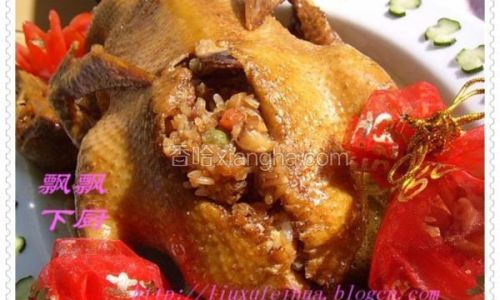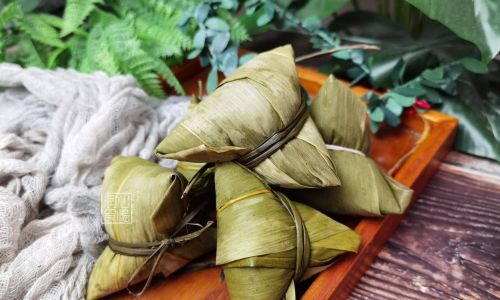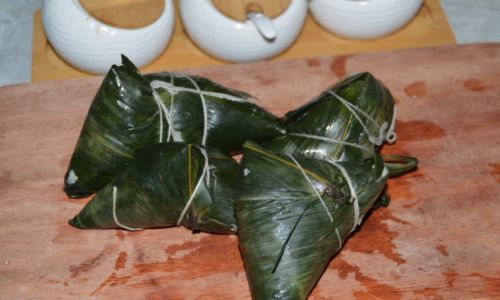Introduction
Eight-Treasure Duck, or Ba Bao Ya in Mandarin, is a celebrated dish in Chinese cuisine that embodies culinary artistry and cultural symbolism. This elaborate recipe, which dates back centuries, involves stuffing a whole duck with a medley of ingredients—often eight, hence the name—and braising it until the meat is tender and the flavors meld into a harmonious symphony. The dish is a staple at banquets, festivals, and family gatherings, symbolizing prosperity, unity, and good fortune. Crafting Eight-Treasure Duck requires patience, precision, and an appreciation for tradition, but the result is a showstopping centerpiece that delights both the eyes and the palate. This article will guide you through the intricate process of preparing this iconic dish, from selecting the finest ingredients to mastering the braising technique that ensures a succulent, flavorful final product.
Historical and Cultural Context
The origins of Eight-Treasure Duck can be traced to the Jiangnan region of China, particularly Shanghai, where it remains a beloved specialty. The dish’s name references the eight treasures—a number deeply significant in Chinese culture, symbolizing completeness and abundance. Historically, these “treasures” varied by region and season, but they typically included a combination of grains, nuts, dried fruits, and aromatic spices. Over time, the recipe evolved, with chefs and home cooks adding their own regional twists. Today, Eight-Treasure Duck is as much a cultural icon as it is a culinary masterpiece, often served during Lunar New Year celebrations, weddings, and other auspicious occasions. Its preparation is seen as an act of love and respect, a way to honor guests with a dish that requires hours of meticulous work.
Ingredients Breakdown
Creating Eight-Treasure Duck demands a carefully curated list of ingredients. While variations exist, the following components form the backbone of the classic recipe:
- Whole Duck (5–6 pounds): Opt for a fresh, plump duck with tender meat. Avoid frozen birds, as they may release excess moisture during cooking, diluting the flavors.
- Glutinous Rice (1.5 cups): This sticky rice variety absorbs the braising liquids beautifully, forming a luxurious base for the stuffing.
- Dried Chestnuts (1 cup): Rehydrated chestnuts add a sweet, nutty richness.
- Dried Shiitake Mushrooms (8–10 pieces): Reconstituted in warm water, these mushrooms impart an earthy umami depth.
- Ginger (3-inch piece): Freshly grated ginger enhances the dish’s aromatic profile.
- Garlic (6 cloves): Minced garlic contributes a pungent, savory note.
- Shaoxing Wine (¼ cup): This Chinese rice wine tenderizes the meat and adds a subtle fermented sweetness.
- Soy Sauce (¼ cup): Use a high-quality dark soy sauce for color and depth.
- Oyster Sauce (2 tablespoons): For added richness and glossiness.
- Sesame Oil (1 tablespoon): A finishing touch that adds nutty complexity.
- Rock Sugar (2 tablespoons): Melted sugar caramelizes the braising liquid, balancing the dish’s flavors.
- Chicken Broth (4 cups): Homemade broth is ideal, but store-bought low-sodium broth works in a pinch.
- Star Anise (3 pieces): These aromatic pods infuse the dish with licorice-like warmth.
- Cinnamon Stick (1 piece): Adds a hint of sweet spiciness.
- Scallions (6 stalks): Tied into a bundle, they release a mild oniony aroma during braising.
- Optional Additions: Dried lotus seeds, barley, bamboo shoots, or goji berries can be included for texture and visual appeal.
Step-by-Step Preparation
Preparing the Duck
Begin by thoroughly cleaning the duck. Remove any giblets, trim excess fat, and pat the skin dry with paper towels. Using a sharp paring knife, carefully prick the duck’s skin all over, focusing on the breast and thigh areas. This step allows fat to render during cooking, ensuring crispier skin. Next, marinate the duck. In a large bowl, combine 2 tablespoons of soy sauce, 1 tablespoon of Shaoxing wine, 1 tablespoon of minced garlic, and 1 tablespoon of grated ginger. Rub this mixture generously over the duck’s exterior and inside the cavity. Cover and refrigerate for at least 4 hours, or preferably overnight, to allow the flavors to penetrate the meat.

Making the Stuffing
While the duck marinates, prepare the stuffing. Rinse the glutinous rice under cold water until the water runs clear, then soak it in warm water for 30 minutes. Drain and set aside. In a separate bowl, rehydrate the dried chestnuts and shiitake mushrooms by soaking them in hot water for 20 minutes. Once softened, drain, slice the mushrooms into thin strips, and halve the chestnuts. Heat 2 tablespoons of vegetable oil in a wok over medium heat. Add the remaining garlic and ginger, stir-frying until fragrant. Toss in the mushrooms and chestnuts, followed by the drained rice. Stir-fry for 3–4 minutes, then add 1 tablespoon of soy sauce, 1 tablespoon of oyster sauce, and a pinch of white pepper. Mix well, then transfer the stuffing to a baking dish and steam for 20 minutes. This step partially cooks the rice, preventing it from becoming gummy during braising.
Stuffing and Trussing the Duck
Once the stuffing is cool enough to handle, generously fill the duck’s cavity. Avoid overstuffing, as the rice will expand during cooking. Secure the opening with toothpicks or kitchen twine, ensuring the stuffing remains intact. Next, truss the duck to maintain its shape. Using butcher’s twine, tie the legs together and tuck the wings beneath the body. This step promotes even cooking and a polished presentation.
Braising to Perfection
Preheat your oven to 300°F (150°C). In a large Dutch oven or heavy-bottomed pot, heat 2 tablespoons of vegetable oil over medium-high heat. Sear the duck breast-side down until the skin turns golden brown, about 5–7 minutes. Flip and sear the other side, then remove the duck from the pot. Deglaze the pot with the remaining Shaoxing wine, scraping up any browned bits. Add the chicken broth, rock sugar, star anise, cinnamon stick, and scallion bundle. Stir until the sugar dissolves, then return the duck to the pot, breast-side up. The braising liquid should reach halfway up the duck; add more broth if needed. Cover the pot and transfer it to the oven. Braise for 2.5–3 hours, basting the duck every 30 minutes with the braising liquid. The duck is ready when the meat easily pulls away from the bone and the skin is glossy and tender.
Finishing Touches
Carefully transfer the duck to a serving platter. Strain the braising liquid into a saucepan, discarding the aromatics. Skim off excess fat, then simmer the liquid over medium heat until it reduces by half, creating a rich, syrupy glaze. Brush the glaze over the duck, then drizzle with sesame oil. Garnish with thinly sliced scallions and toasted sesame seeds for a pop of color and texture.
Tips for Success
- Marinating Time: Allow the duck to marinate overnight for maximum flavor penetration.
- Trussing Technique: If using twine, wrap it snugly but not too tightly to avoid puncturing the skin.
- Braising Temperature: Maintain a gentle simmer to prevent the duck from drying out.
- Stuffing Consistency: The rice should be al dente before braising, as it will soften further in the liquid.
Variations and Customizations
While the classic recipe is a masterpiece on its own, feel free to experiment:

- Vegetarian Twist: Substitute the duck with a large, whole cabbage or tofu skin stuffed with the same mixture.
- Spicy Kick: Add dried chili flakes or Sichuan peppercorns to the stuffing for heat.
- Fruity Notes: Incorporate diced dried apricots or cranberries into the stuffing for a sweet-tart contrast.
Health and Nutritional Benefits
Eight-Treasure Duck, while indulgent, offers several nutritional perks. Duck meat is a rich source of lean protein, iron, and B vitamins, while the stuffing’s glutinous rice and vegetables provide fiber and essential minerals. The dish’s aromatic spices, like ginger and star anise, aid digestion and have anti-inflammatory properties. Moderation is key, however, due to the duck’s higher fat content. For a lighter version, remove the skin before serving.
Serving Suggestions and Pairings
Eight-Treasure Duck is traditionally served family-style, allowing diners to savor it alongside steamed jasmine rice, stir-fried greens, and a tangy plum sauce. Pair it with a crisp Riesling or a lightly oolong tea to balance the dish’s richness. For a festive touch, garnish the platter with edible flowers or microgreens.
Troubleshooting Common Issues
- Soggy Skin: If the skin lacks crispness, briefly broil the duck on a rack after braising.
- Dry Meat: Ensure the braising liquid covers at least half the duck, and baste regularly.
- Bland Flavor: Amplify the marinade with extra soy sauce or a splash of fish sauce.
Conclusion
Crafting Eight-Treasure Duck is a labor of love that rewards the cook with a dish of unparalleled depth and beauty. While the process demands time and attention, each step—from marinating the duck to braising it to tender perfection—is a testament to the culinary heritage that has made this dish a timeless classic. Whether served at a holiday feast or a weekend dinner party, Eight-Treasure Duck is sure to impress, offering a taste of tradition that transcends generations. So gather your ingredients, embrace the rhythm of the kitchen, and savor the joy of creating a masterpiece that nourishes both body and soul.





0 comments